Palm Springs is a popular destination for birdwatchers and nature enthusiasts alike. This desert oasis is home to a wide variety of birds, from colorful songbirds to majestic raptors.
With a year-round mild climate and close proximity to the Salton Sea and the Colorado River, Palm Springs is an ideal spot for birding.
Whether you’re looking for a leisurely stroll through a nature preserve or a challenging hike through the mountains, you’re sure to find something that suits your taste. With more than 300 species of birds documented in the area, there is plenty to see in Palm Springs.
From the iconic roadrunner to the rare cactus wren, you’ll be sure to have a memorable bird-watching experience.
1. Mourning Dove
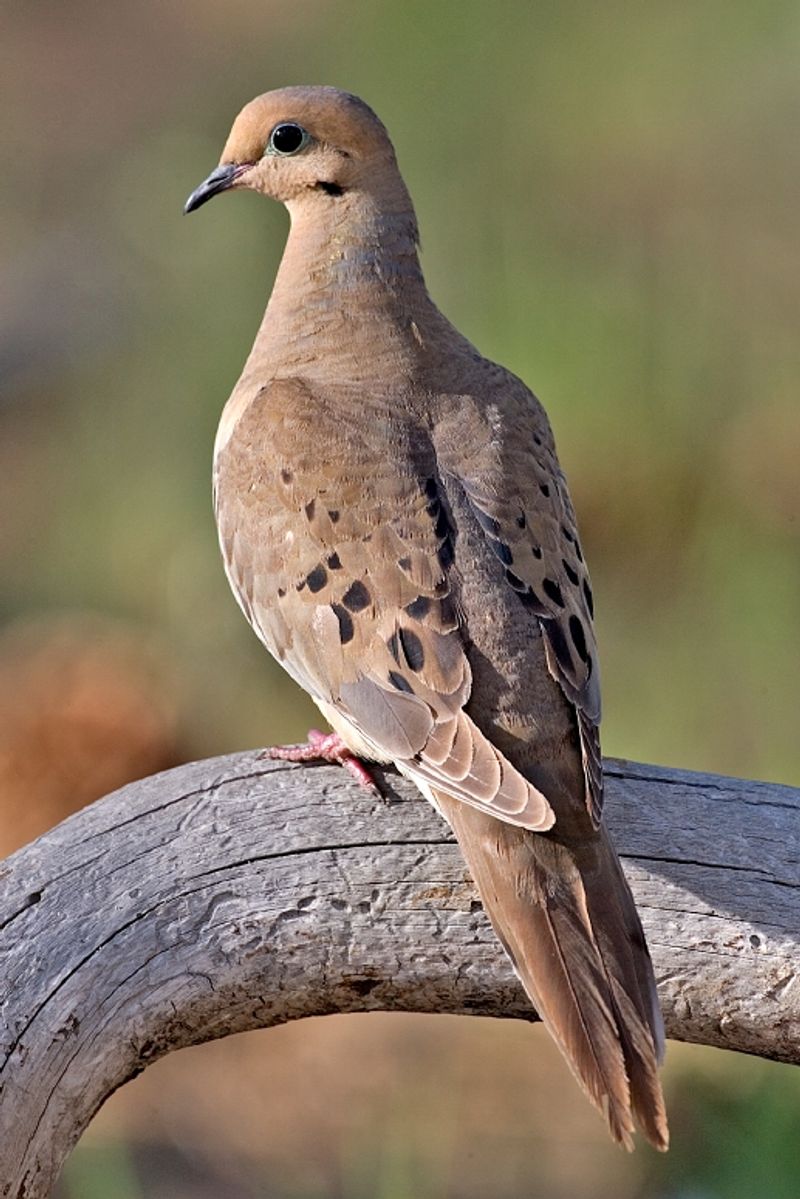
The mourning dove is a type of bird that belongs to the Columbidae family. It is native to North America and is also known by a variety of different names. People commonly refer to it as the American mourning dove, the rain dove, or colloquially, the turtle dove.
In the past, the mourning dove was known as the Carolina pigeon or Carolina turtledove. The mourning dove is a medium-sized bird that is typically grey or brown in color, with a white-tipped tail.
It is known for its distinctive call, which sounds like it is mourning or lamenting something. The mourning dove typically builds its nest on trees or shrubs and feeds on seeds, fruits, and insects.
It can also be found in urban areas, where it is often seen perched on telephone wires or buildings.
| Kingdom | Animalia |
| Phylum | Chordata |
| Class | Aves |
| Order | Columbiformes |
| Family | Columbidae |
| Genus | Zenaida |
| Species | Z. macroura |
2. Black-Crowned Night Heron
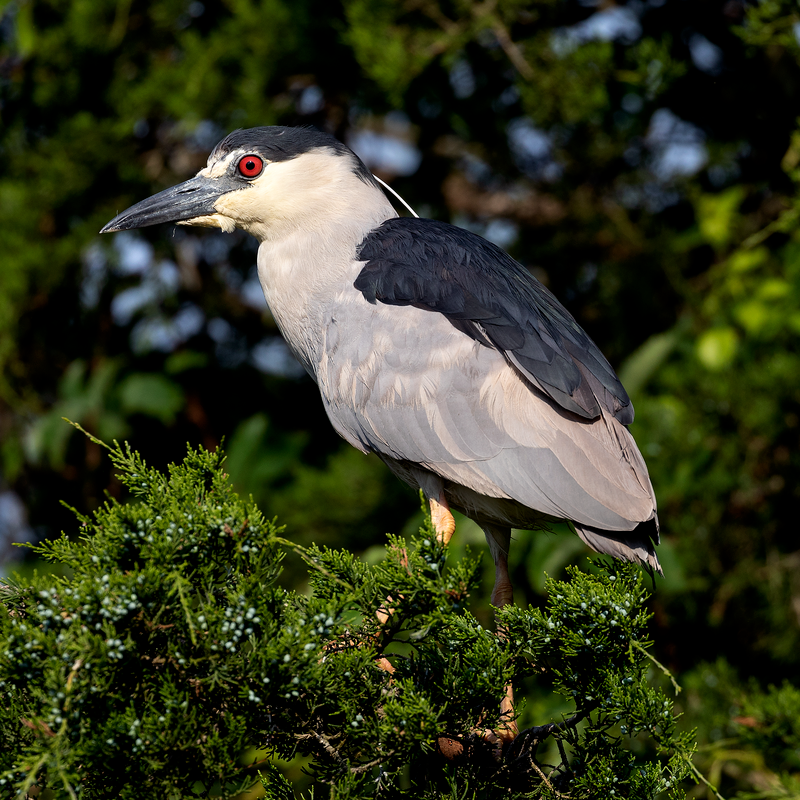
The black-crowned night heron, also known as the black-capped night heron, is a type of heron that is found across many continents. It is a medium-sized bird, with a wingspan of about 2.5 feet and a body length of around 2 feet.
The night heron is most commonly seen in Eurasia, however, it has been spotted in other areas such as North and South America, as well as parts of Europe and Asia.
The bird has a black crown, which is why it is called the black-crowned night heron, and a white face with yellow eyes. It has long, yellow legs, and a long, pointed bill. The night heron is a solitary bird and can usually be seen alone or in small groups.
Its diet consists mainly of small fish, frogs, and insects, which it hunts by wading in shallow water. The black-crowned night heron is a widely distributed species and is classified by the International Union for Conservation of Nature as a species of least concern.
It is an important part of the global ecosystem and its presence helps maintain a healthy balance in many areas.
| Kingdom | Animalia |
| Phylum | Chordata |
| Class | Aves |
| Order | Pelecaniformes |
| Family | Ardeidae |
| Genus | Nycticorax |
| Species | N. nycticorax |
3. White-Winged Dove
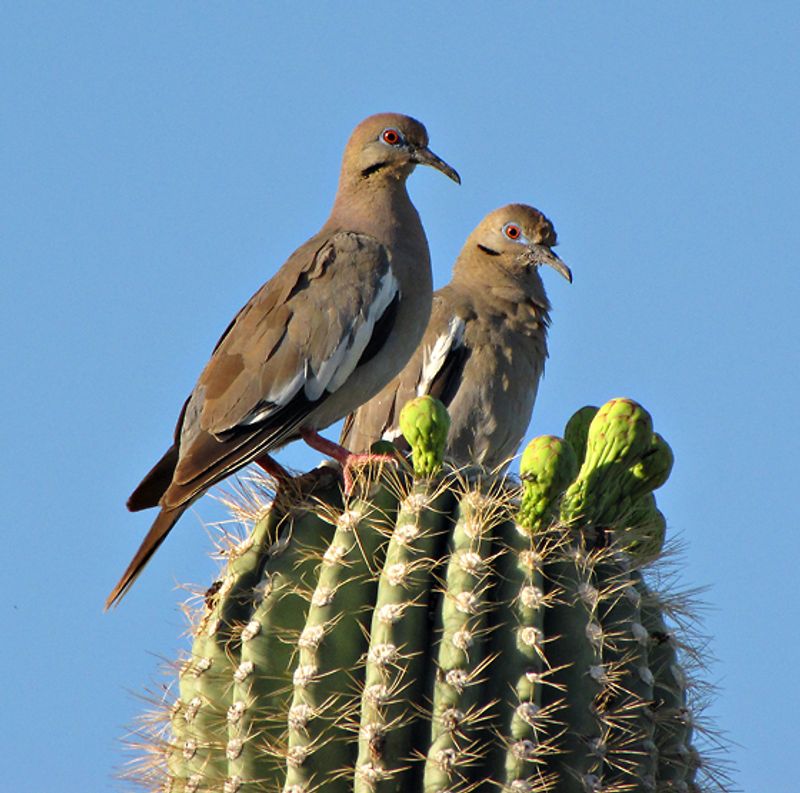
The white-winged dove is a species of dove that can be found across the Southwestern United States, Mexico, Central America, and the Caribbean. It is a larger dove compared to other species, with a distinctive white edge on its wings.
It can easily be identified from other doves due to this unique feature. Additionally, it has blue eyering and red eyes, which further distinguishes it from other doves.
The white-winged dove is a beautiful bird that has a high population across its range and is a popular sighting for birdwatchers.
| Kingdom | Animalia |
| Phylum | Chordata |
| Class | Aves |
| Order | Columbiformes |
| Family | Columbidae |
| Genus | Zenaida |
| Species | Z. asiatica |
4. Costa’s Hummingbird
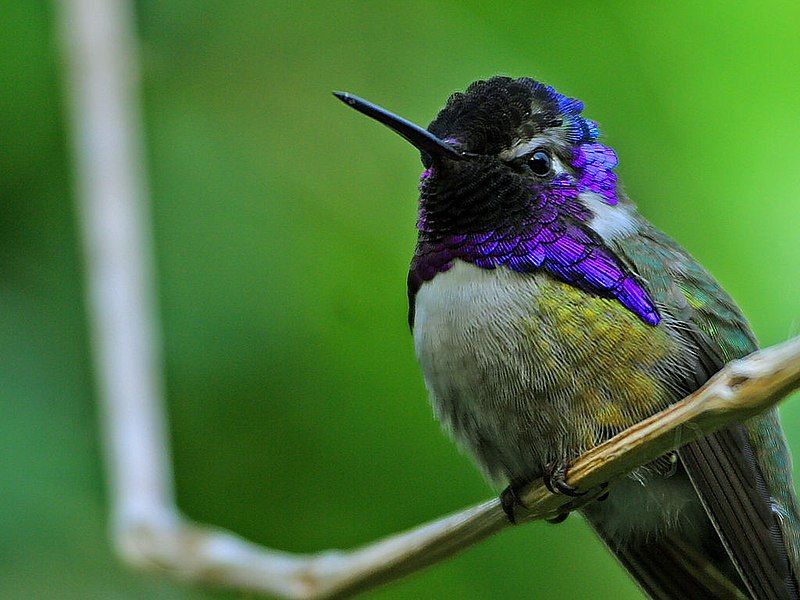
Costa’s hummingbird is a species of bird in the Trochilidae family, also known as the hummingbird family. It is native to the arid region of the southwestern United States and northwest Mexico.
During the winter months, Costa’s hummingbird migrates to western Mexico, where it can find the warm temperatures it needs to survive. This species prefers to live in open grasslands and scrubby areas, as well as chaparral and oak woodlands.
Its diet consists mainly of nectar and small insects, which it collects using its long, curved bill. Costa’s hummingbird is a small, brightly-colored bird, with a metallic green back, white throat, and pinkish-orange belly.
Its vibrant plumage makes it a particularly stunning species to observe.
| Kingdom | Animalia |
| Phylum | Chordata |
| Class | Aves |
| Clade | Strisores |
| Order | Apodiformes |
| Family | Trochilidae |
| Genus | Calypte |
| Species | C. Costae |
5. House Finch
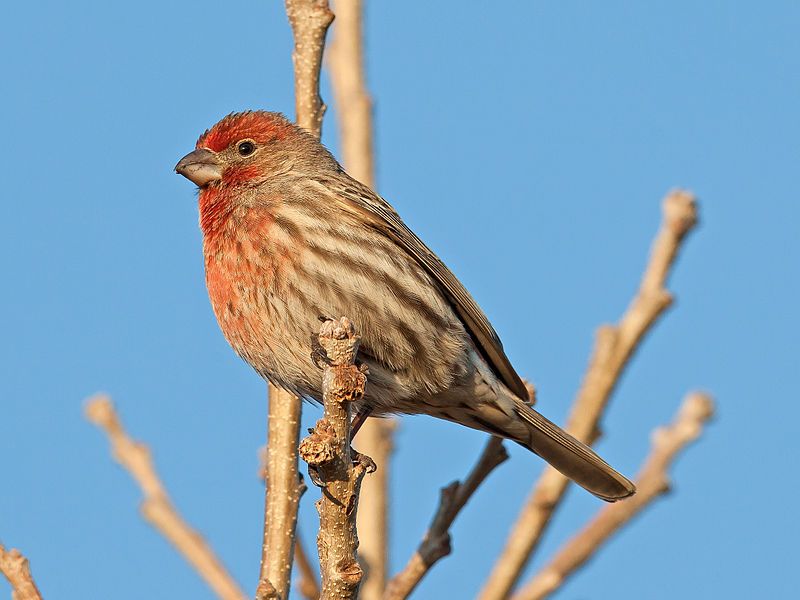
The house finch is a small bird belonging to the Fringillidae family, which is made up of finches. It is native to western North America, including the states of California, Oregon, and Washington.
In recent years, the house finch has been introduced to the eastern United States, as well as Hawaii. This species is one of three species of American rosefinches, which are all placed in the genus Haemorhous.
The house finch is a small bird, measuring between five and six inches in length. Its plumage is typically brown or gray in color, with a reddish hue on its head and wings. It also has a distinctive red stripe on its chest and belly.
Its diet consists mainly of seeds and various insects, which it obtains by foraging on the ground or in trees. In its native range in the western United States, the house finch is a common sight, often seen in gardens and parks.
Since its introduction to the eastern United States, its range has expanded considerably. It is now found in many areas throughout the eastern half of the country and has even been spotted in Hawaii. The house finch is an important species for conservation efforts.
It is considered to be of least concern by the International Union for Conservation of Nature, meaning it is not currently threatened by human activities.
Despite this, it is important to continue to monitor the species, as the introduction of invasive species could have a negative impact on its population.
| Kingdom | Animalia |
| Phylum | Chordata |
| Class | Aves |
| Order | Passeriformes |
| Family | Fringillidae |
| Genus | Haemorhous |
| Species | H. mexicanus |
6. Red-Tailed Hawk
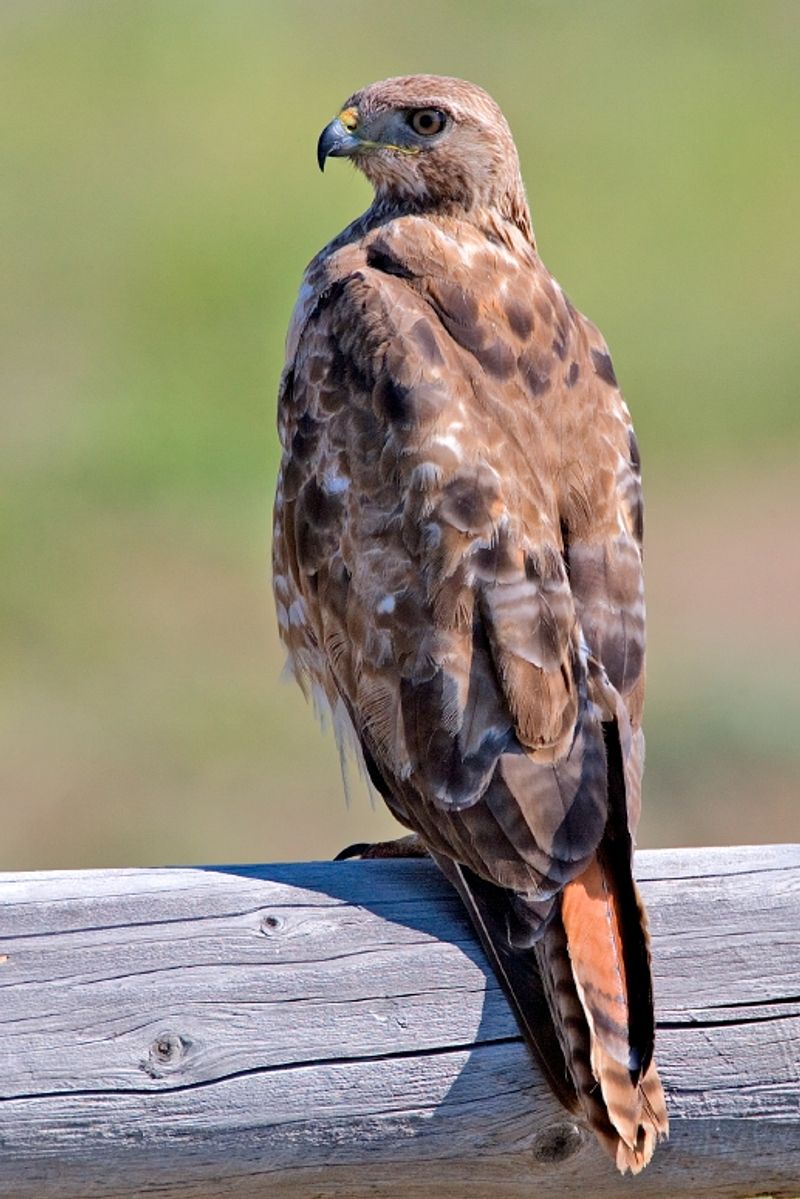
The red-tailed hawk is a bird of prey that inhabits a wide range of habitats throughout North America. Its range stretches from the interior of Alaska and northern Canada all the way south to Panama and the West Indies.
This makes it one of the most widespread birds within the genus Buteo in North America and even across the world. The red-tailed hawk can be found in many different habitats, from open grasslands and deserts to forests and urban areas.
It is a powerful and agile hunter, often preying on small mammals such as rabbits and rodents. They have keen eyesight and can spot prey from a great distance.
They also have a distinctive red tail, which is how they get their name. The red-tailed hawk is a common sight for many people living in North America. They are often seen perched on fence posts, telephone poles, or other elevated spots, keeping a watchful eye for potential prey.
They are also known for their impressive aerial displays, such as soaring in circles or performing dives and steep climbs.The red-tailed hawk is an important part of the ecosystem in North America.
They help to keep populations of small mammals in check, helping to ensure a healthy balance in the environment. They are also an important part of the food chain, providing food for other animals such as owls and other raptors.
| Kingdom | Animalia |
| Phylum | Chordata |
| Class | Aves |
| Order | Accipitriformes |
| Family | Accipitridae |
| Genus | Buteo |
| Species | B. jamaicensis |
7. Gambel’s Quail
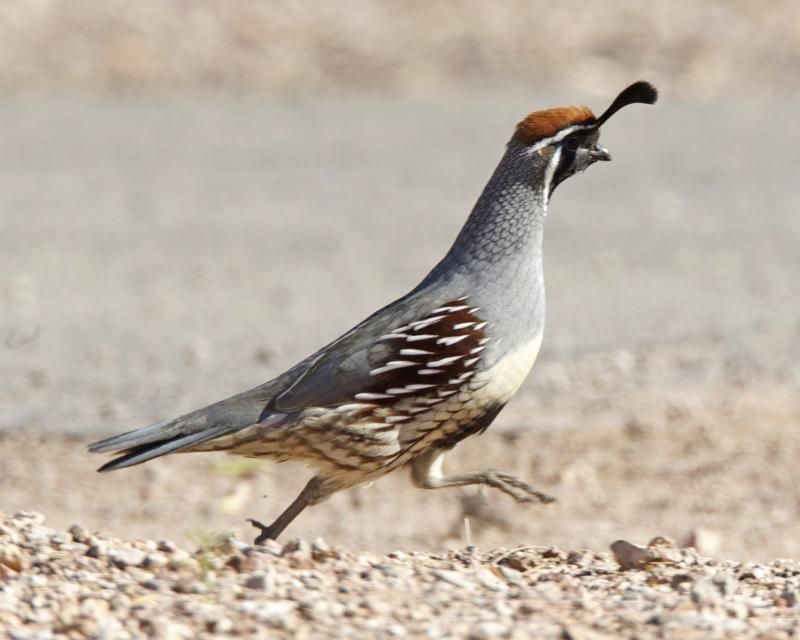
Gambel’s quail is a member of the New World quail family and is known for living on the ground. This species is primarily found in desert regions in the United States and Mexico.
In the United States, Gambel’s quail can be found in Arizona, California, Colorado, New Mexico, Nevada, Utah, and Texas. In Mexico, it is located in Sonora, in the New Mexico border Chihuahua, and in the Colorado River region of Baja California.
The Gambel’s quail is a small bird, adapted to living in the harsh desert environment. It feeds on seeds, fruits, insects, and other small animals. Its main predators are hawks, snakes, cats, and other birds of prey.
The Gambel’s quail is an important species to the local ecology, helping to maintain essential biodiversity and contributing to the natural balance of the desert.
| Kingdom | Animalia |
| Phylum | Chordata |
| Class | Aves |
| Order | Galliformes |
| Family | Odontophoridae |
| Genus | Callipepla |
| Species | C. gambelii |
8. Allen’s Hummingbird
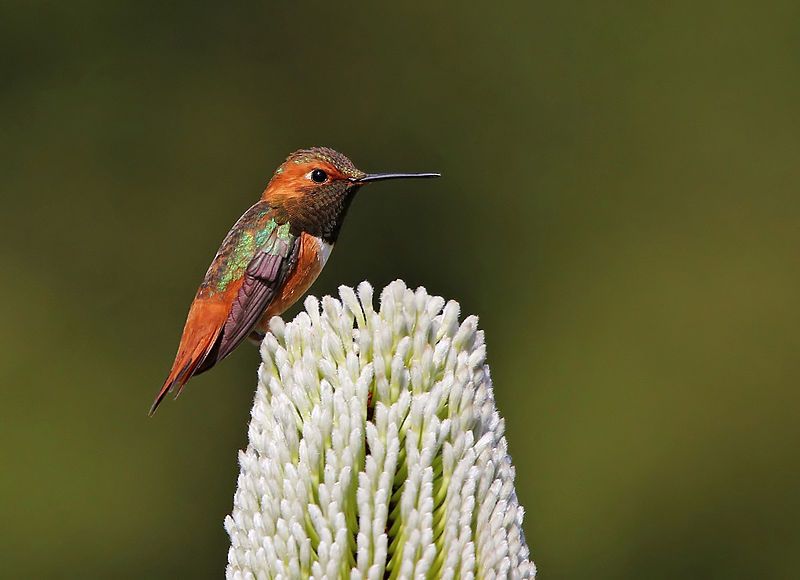
Allen’s hummingbird is a species of hummingbird that can be found in the western part of the United States. It is part of a family of hummingbirds that includes seven different species.
It is the only species in the genus Selasphorus, which is the scientific name for Allen’s hummingbird. This species of hummingbird is known for its small size, greenish-colored body, and reddish-brown tail feathers. It is also known for its fast and acrobatic flight.
The Allen’s hummingbird is a migratory species, meaning that it moves from one region to another depending on the season. During the summer months, they can be found in the western United States, including California, Oregon, and Washington.
During the winter months, they can be found in Mexico. These birds feed on small insects, nectar, and small fruits. They are an important part of the ecosystem, as they help to pollinate plants and help to keep insect populations in check.
| Kingdom | Animalia |
| Phylum | Chordata |
| Class | Aves |
| Clade | Strisores |
| Order | Apodiformes |
| Family | Trochilidae |
| Genus | Selasphorus |
| Species | S. sasin |
9. Verdin
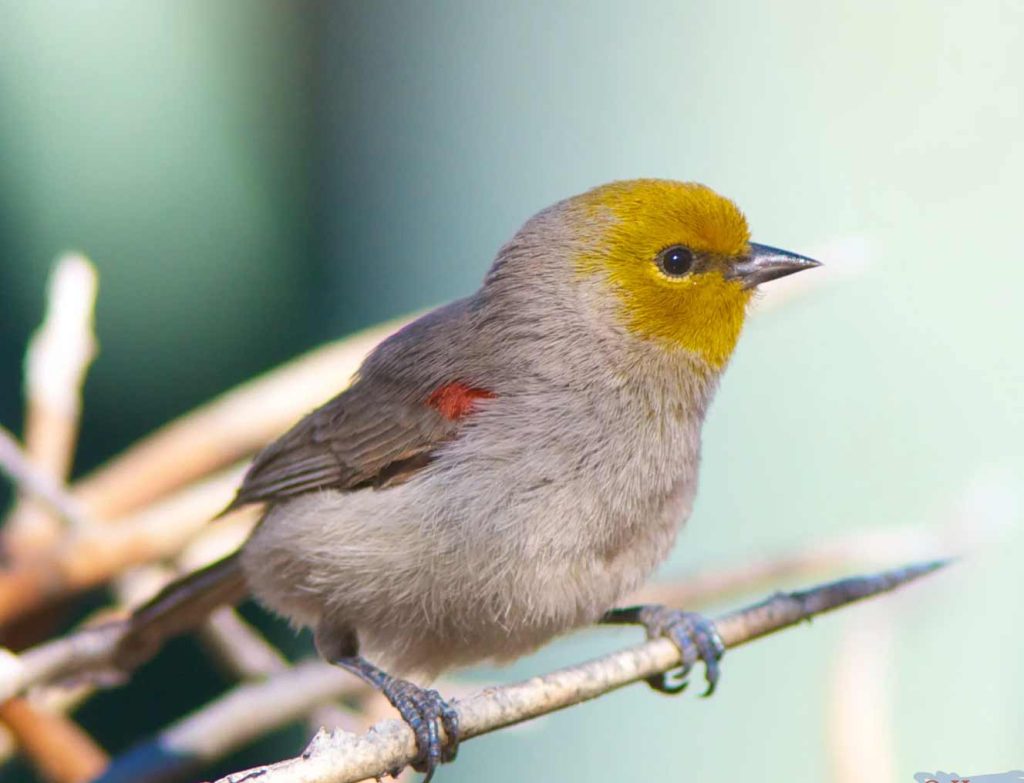
Source: audubon.org
The verdin is a small bird belonging to the penduline tit family. It is the only species in the genus Auriparus, which is part of the Old World family Remizidae.
This means that the verdin is the only representative of the Remizidae family found in North America, making it a unique species. The verdin is approximately 4.5 inches long and has a white belly and yellowish upperparts. Its wings are short and rounded and its tail is pointed.
The verdin is found in areas of the southwestern United States and northern Mexico, where it inhabits open, dry habitats such as deserts, grasslands, and woodlands. It is known for its distinctive, melodious song and its use of abandoned woodpecker cavities for nesting.
The verdin is an important part of the ecosystem, as it feeds on insects and pollinates plants. Its diet includes caterpillars, moths, spiders, and other invertebrates, as well as some fruits.
| Kingdom | Animalia |
| Phylum | Chordata |
| Class | Aves |
| Order | Passeriformes |
| Family | Remizidae |
| Genus | Auriparus |
| Species | A. flaviceps |
10. Greater Roadrunner
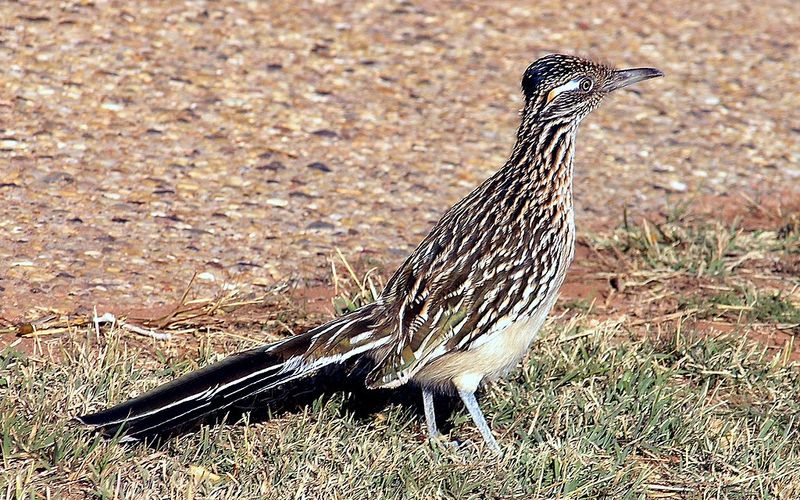
The Greater Roadrunner is a species of bird that belongs to the cuckoo family Cuculidae, native to the Aridoamerica region in the Southwestern United States and Mexico.
It is known for its long legs and its scientific name, Geococcyx californianus, which translates to “Californian earth-cuckoo”.
The Greater Roadrunner is one of two species in the genus Geococcyx, the other being the lesser roadrunner. The Greater Roadrunner is a medium-sized bird, reaching up to 24 inches in length.
It has a mottled brown and gray plumage, with black and white markings on its back and wings. Its long legs and tail are usually held in an upright position when it is running. The Greater Roadrunner is omnivorous, feeding on insects, small mammals, reptiles, and bird eggs.
It is also known to consume fruits and berries. The Greater Roadrunner can be found in a variety of habitats, such as deserts, grasslands, chaparral, and scrubland. It is an opportunistic bird, using its long legs to run after its prey.
It is also capable of brief flights but usually prefers to run or walk instead.
The Greater Roadrunner is a solitary bird, but it will come together in pairs during the breeding season. The Greater Roadrunner is an iconic species in the southwestern United States and Mexico and is the state bird of New Mexico.
It is a resilient species that has adapted to many changes in its environment, making it an important link in the food chain. Its presence is a welcome sign of the region’s biodiversity.
| Kingdom | Animalia |
| Phylum | Chordata |
| Class | Aves |
| Order | Cuculiformes |
| Family | Cuculidae |
| Genus | Geococcyx |
| Species | G. californianus |
11. American Kestrel
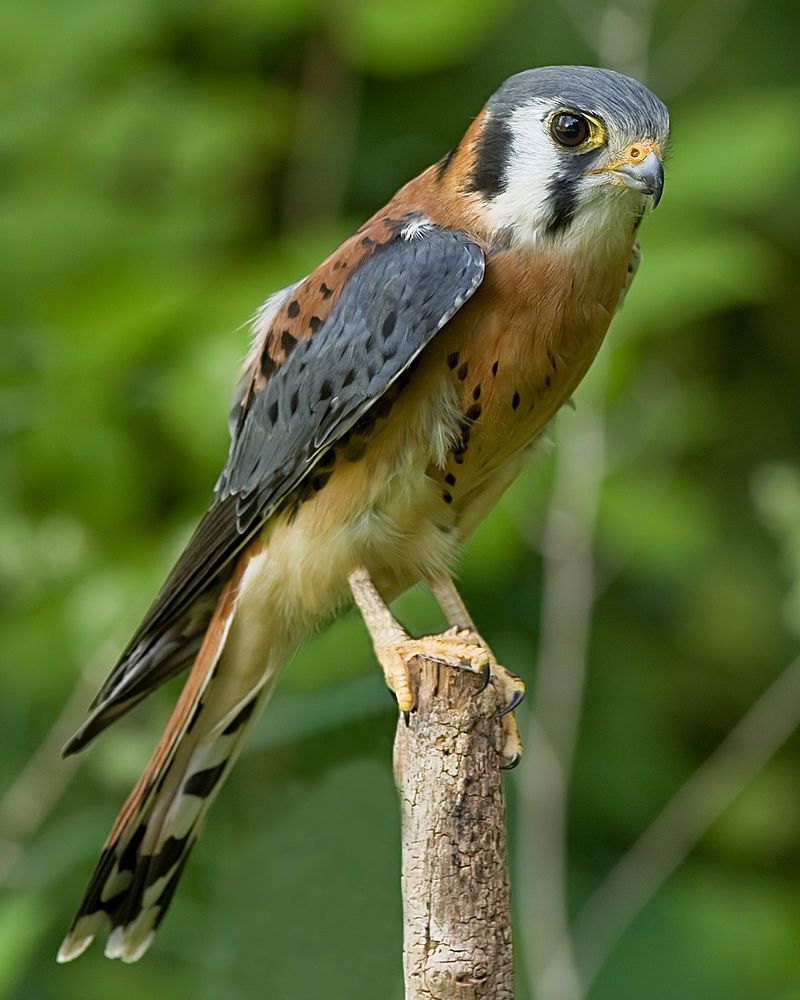
The American kestrel, also known as the sparrow hawk, is the smallest and most common type of falcon native to North America. This small, colorful bird has a considerable range in size among its various subspecies and sexes.
It can range in weight from that of a blue jay to that of a mourning dove, a ratio of roughly two to one. The American kestrel is one of the most widespread birds of prey in North America and is easily recognizable by its bright plumage and distinctive call.
It has adapted to many different habitats, ranging from open fields and grasslands to urban areas, and can be found across the continent. This versatile raptor has a wide variety of food sources, including insects, small mammals, and other birds.
Its adaptability and hardiness make it an important species for conservation efforts.
| Kingdom | Animalia |
| Phylum | Chordata |
| Class | Aves |
| Order | Falconiformes |
| Family | Falconidae |
| Genus | Falco |
| Species | F. sparverius |
12. Yellow-Rumped Warbler
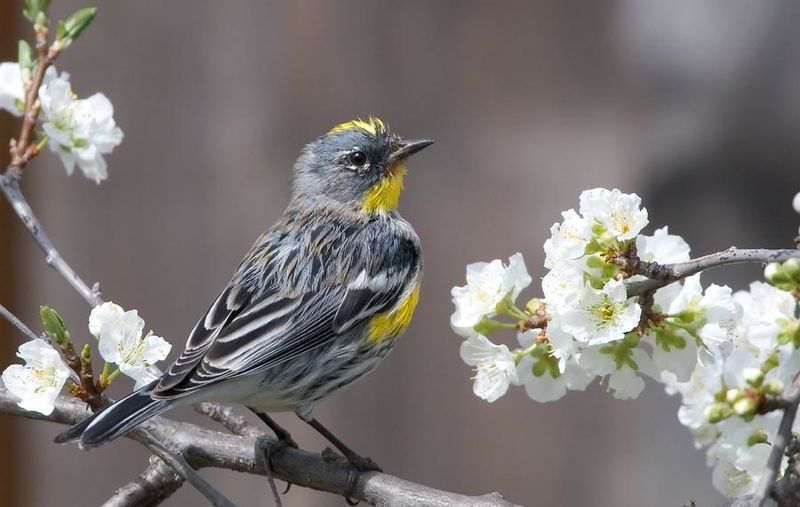
The yellow-rumped warbler is a species of bird found throughout North America. It is a migratory species that can be observed in a variety of habitats. The bird is usually a dull yellow color with darker shades of brown and grey.
It has distinctive yellow patches on its rump, which gives the species its name. The yellow-rumped warbler is omnivorous, eating both insects and fruit. During the summer months, it is often seen foraging for food in open fields and wooded areas.
In the winter, it will migrate to more southern areas in search of food. This species is also a popular backyard bird, often coming to bird feeders to feed.
Overall, the yellow-rumped warbler is an abundant species that can be easily spotted in a variety of North American habitats.
| Kingdom | Animalia |
| Phylum | Chordata |
| Class | Aves |
| Order | Passeriformes |
| Family | Parulidae |
| Genus | Setophaga |
| Species | S. coronata |
13. Golden Eagle
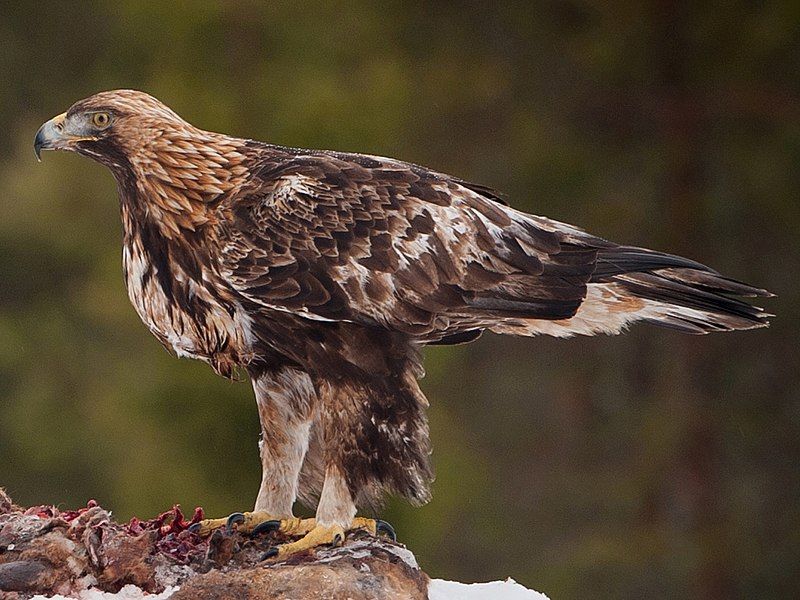
The golden eagle is a bird of prey that inhabits the Northern Hemisphere. It is a species of eagle and resides in multiple locations, making it the most widely distributed eagle species in the world.
As with all eagle species, it belongs to the Accipitridae family, the family of birds of prey that are found in the Northern Hemisphere. Golden eagles are known for their impressive size, strength, and majestic wingspan.
They are also recognized for their intelligence, speed, and powerful talons, which make them one of the top predators in the region.
Golden eagles are a symbol of strength, courage, and power in the animal kingdom, and they are often revered and respected by people living within their range.
| Kingdom | Animalia |
| Phylum | Chordata |
| Class | Aves |
| Order | Accipitriformes |
| Family | Accipitridae |
| Genus | Aquila |
| Species | A. chrysaetos |
14. Roadrunner
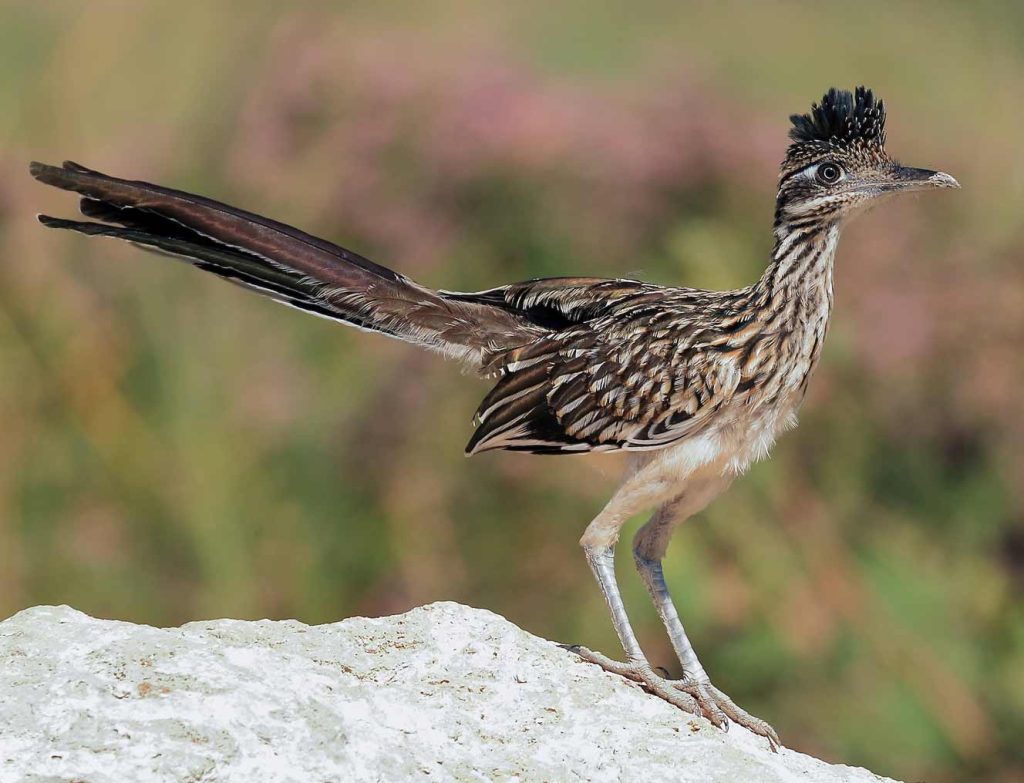
Source: ebird.org
Roadrunners are two species of birds that are found in the southwestern and south-central United States and Mexico. They are also known as chaparral birds or chaparral cocks. These birds have long tails and crests and are known to be very fast runners.
They can fly, but they usually prefer to run away from predators rather than fly. Roadrunners live in desert areas, where they can find plenty of food and resources. They are omnivores and consume both insects and small mammals.
Roadrunners are highly adapted to the desert environment and are able to survive in harsh conditions. They are an important part of the desert ecosystem and help to keep it balanced.
| Kingdom | Animalia |
| Phylum | Chordata |
| Class | Aves |
| Order | Cuculiformes |
| Family | Cuculidae |
| Genus | Geococcyx |
15. Phainopepla
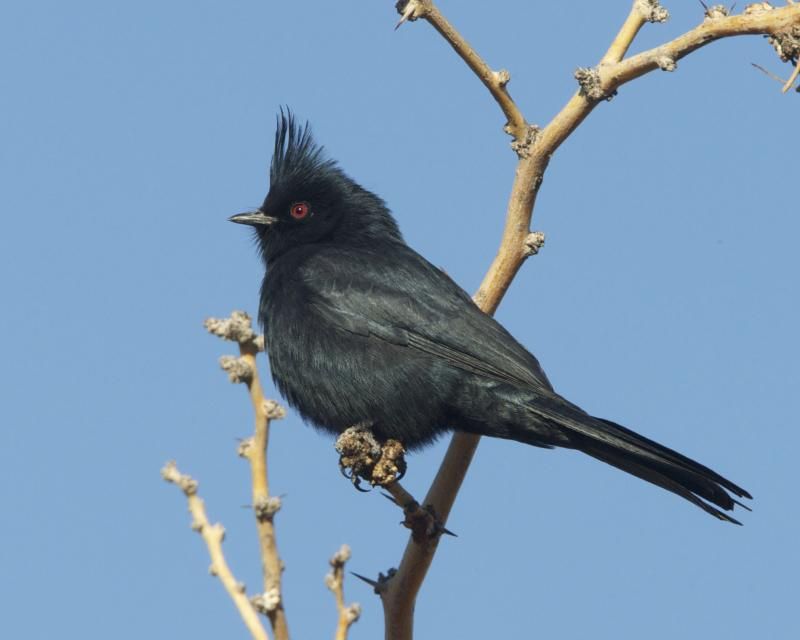
The phainopepla, also known as the northern phainopepla, is a species of bird that is found in the northernmost regions of Central America. It is the only representative of its family, Ptiliogonatidae, which is mostly composed of tropical species.
The name “phainopepla” is derived from the Greek words “phain” and “pepla”, which together mean “shining robe”. This is an apt description for the species, as males have brightly colored plumage that shines in the sunlight.
The plumage of the male phainopepla is black with a metallic sheen, and it has a distinctive crest that gives it a regal appearance. The female is a more subdued grayish-brown color. The phainopepla is an active hunter, preying on insects and other invertebrates.
They are usually found in open woodlands, often near water. These birds are relatively low in population, but they are not currently considered to be endangered.
| Kingdom | Animalia |
| Phylum | Chordata |
| Class | Aves |
| Order | Passeriformes |
| Family | Ptiliogonatidae |
| Genus | Phainopepla |
| Species | P. nitens |
16. Cooper’s Hawk
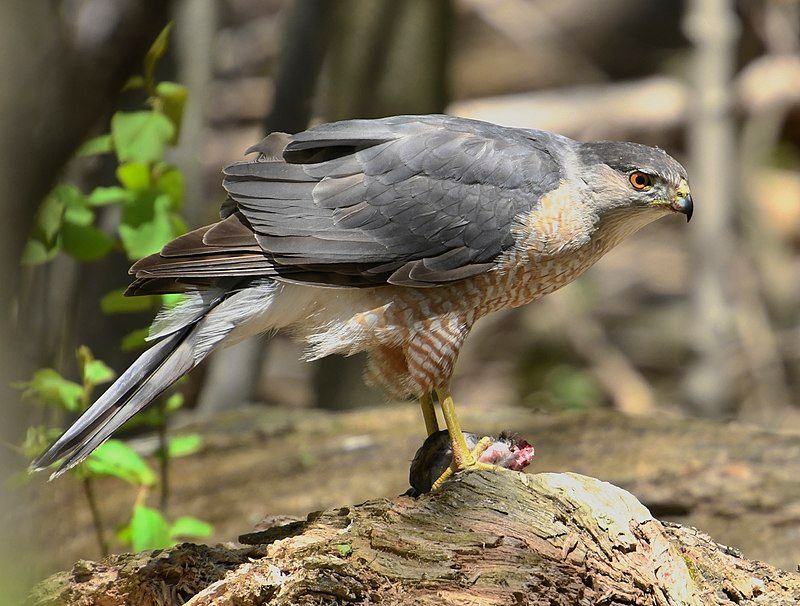
Cooper’s hawk is a species of bird found throughout North America, from southern Canada to Mexico. It is a medium-sized hawk, belonging to the genus Accipiter, commonly known as the “true” hawk. It is mainly gray in color, with a white chest and reddish-brown tail and wings.
The Cooper’s hawk is a very powerful and agile bird of prey, capable of catching prey mid-air or chasing it on the ground. It primarily feeds on smaller birds, such as songbirds, pigeons, and doves, as well as small mammals, reptiles, and amphibians.
They generally hunt from an elevated perch or while soaring in the sky, using their exceptional vision to spot prey. Cooper’s hawks usually nest in trees, though some will use man-made structures or other suitable sites.
They usually mate for life, and the female will lay 2-6 eggs in the nest, which she will incubate for between 28-35 days. The young will stay in the nest for a further 5-6 weeks before fledging and becoming independent.
| Kingdom | Animalia |
| Phylum | Chordata |
| Class | Aves |
| Order | Accipitriformes |
| Family | Accipitridae |
| Genus | Accipiter |
| Species | A. cooperii |
17. Black-Throated Sparrow
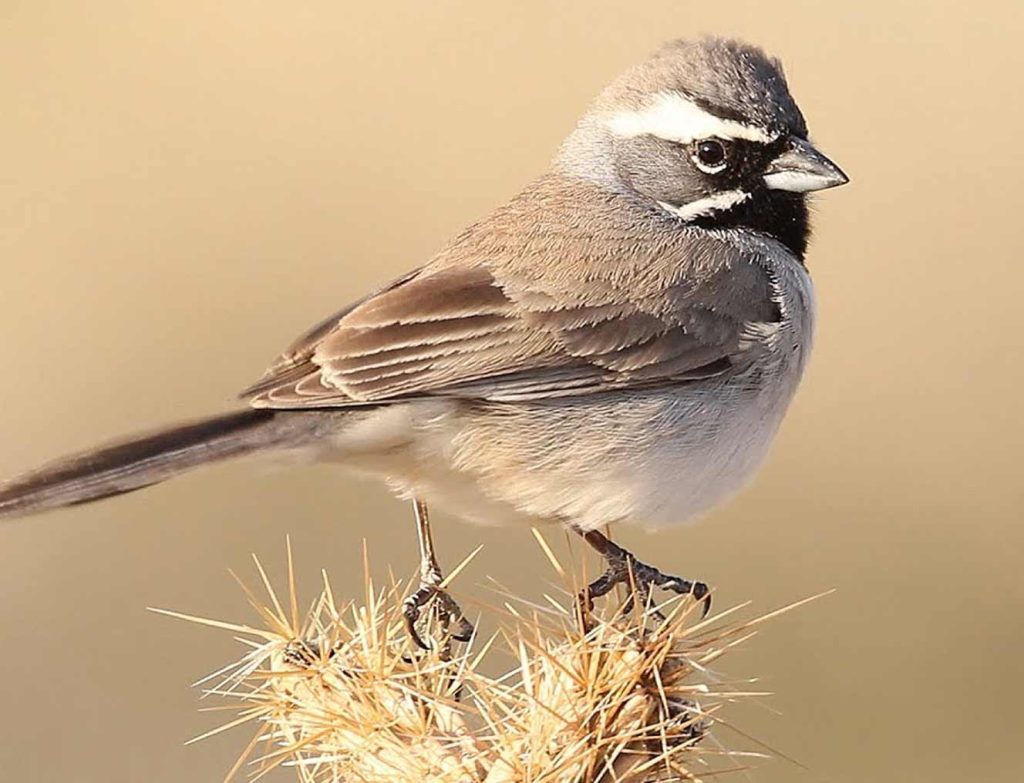
The black-throated sparrow is a small bird species that is mainly found in the southwestern United States and Mexico. It is the only bird species that belong to the genus Amphispiza.
The five-striped sparrow, which was previously classified as part of the same genus, is now believed to be in a separate and unique genus called Amphispizopsis.
This bird species has a distinct black throat which makes it easily identifiable and is the main feature that sets it apart from other birds. The black-throated sparrow is a ground-nesting species and prefers semi-arid habitats with sparse grass and shrubs.
Its diet consists of seeds and insects and it is known to forage for food in large flocks. This species also migrates from Mexico to the United States during the winter months.
| Kingdom | Animalia |
| Phylum | Chordata |
| Class | Aves |
| Order | Passeriformes |
| Family | Passerellidae |
| Genus | Amphispiza |
| Species | A. bilineata |
18. Say’s Phoebe
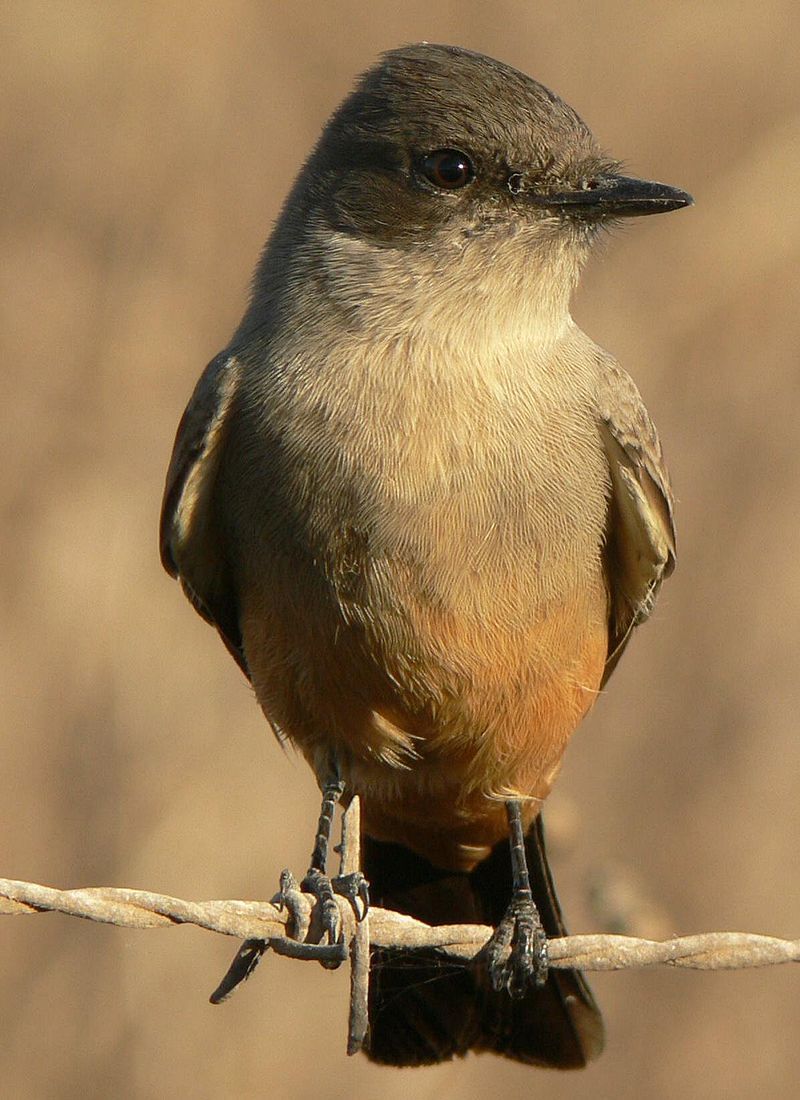
Say’s phoebe is a species of bird belonging to the tyrant flycatcher family. It is a widespread bird across western North America, where it is often seen in dry, arid habitats.
This species was named in honor of Thomas Say, an American naturalist who first described the species in 1823. Say’s phoebe has a wide range, spanning from southern Canada to northern Mexico.
It is generally found in semi-desert areas, such as sagebrush and grasslands, as well as in open woodlands and agricultural land. It is recognizable by its large size and striped brown back. Its diet consists mainly of insects, which it catches in mid-air while flying.
It also enjoys seeds and berries when available. Say’s phoebe is a beneficial species for farmers, as it helps to control insect populations. It is also an important species for conservation, as its range is becoming increasingly threatened by climate change and development.
| Kingdom | Animalia |
| Phylum | Chordata |
| Class | Aves |
| Order | Passeriformes |
| Family | Tyrannidae |
| Genus | Sayornis |
| Species | S. Saya |
Conclusion
Birds in Palm Springs provide both aesthetic and ecological benefits for the area, and their presence is an important part of the region’s environment.
From migratory species to resident birds, the city is home to a wide variety of birds, and the habitats of Palm Springs provide a rich array of resources for them.
With the conservation of natural areas and the protection of existing bird populations, this region can continue to be an important refuge for birds in the future.